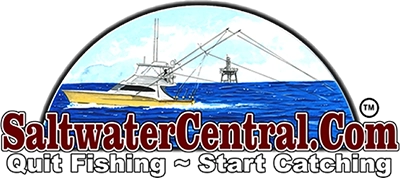U.S. Fish and Wildlife Service Approves Four Nontoxic Shot Types U.S. Fish and Wildlife Service Approves Four Nontoxic Shot Types
The U.S. Fish and Wildlife Service recently approved four new nontoxic
shot types for waterfowl and coot hunting in the United States.
“The Service’s approval of these four shot types demonstrates our
determination to make it easier for waterfowl hunters to comply with the
restrictions on lead shot. Hunters now have a wider choice of shot types
and this will continue to lessen the exposure of waterfowl to lead,” said
Service Director H. Dale Hall. “The Service appreciates the efforts of
the companies that have developed alternatives to lead shot.”
The approved shot types are:
A formulation of tungsten-iron-copper-nickel (TICN) shot, composed
of 40-76 percent tungsten, 10-37 percent iron, 9-16 percent copper
and 5-7 percent nickel produced by Spherical Precision, Inc. of
Tustin, California;
A formulation of iron-tungsten-nickel (ITN) alloys composed of 20-70
percent tungsten, 10-40 percent nickel, and 10-70 percent iron
produced by ENVIRON-Metal Inc. of Sweet Home, Oregon;
A formulation of tungsten-bronze (TB) shot made of 60 percent
tungsten, 35.1 percent copper, 3.9 percent tin, and 1 percent iron
produced by Olin Corporation of East Alton, Illinois; and
A formulation of tungsten-tin-iron (TTI) shot composed of 58 percent
tungsten, 38 percent tin, and 4 percent iron produced by Nice Shot,
Inc., of Albion, Pennsylvania.
Waterfowl can ingest expended lead shot and die from lead poisoning.
Efforts to phase out lead shot began in the 1970s, and a nationwide ban on
lead shot for all waterfowl hunting was implemented in 1991. Canada
followed with a complete ban in 1999.
A study in the mid-1990s suggested that the nationwide ban in the United
States on the use of lead shot for waterfowl hunting has had remarkable
success. Six years after the ban, researchers estimated a 64 percent
reduction in lead poisoning deaths of surveyed mallard ducks and a 78
percent decline in lead pellet ingestion. The study concluded the
restrictions on lead shot has prevented the deaths of thousands of
waterfowl.
With the approval of these new shot types, the list of approved shot types
for waterfowl hunting now includes bismuth-tin, iron (steel),
iron-tungsten (2 types), iron-tungsten-nickel, tungsten-bronze,
tungsten-iron-copper-nickel, tungsten-matrix, tungsten-polymer,
tungsten-tin-iron, tungsten-tin-bismuth, and tungsten-tin-iron-nickel.
For more information on toxic and nontoxic shot, please see
http://migratorybirds.fws.gov/issues/nontoxic_shot/nontoxic.htm.
The U.S. Fish and Wildlife Service recently approved four new nontoxic
shot types for waterfowl and coot hunting in the United States.
“The Service’s approval of these four shot types demonstrates our
determination to make it easier for waterfowl hunters to comply with the
restrictions on lead shot. Hunters now have a wider choice of shot types
and this will continue to lessen the exposure of waterfowl to lead,” said
Service Director H. Dale Hall. “The Service appreciates the efforts of
the companies that have developed alternatives to lead shot.”
The approved shot types are:
A formulation of tungsten-iron-copper-nickel (TICN) shot, composed
of 40-76 percent tungsten, 10-37 percent iron, 9-16 percent copper
and 5-7 percent nickel produced by Spherical Precision, Inc. of
Tustin, California;
A formulation of iron-tungsten-nickel (ITN) alloys composed of 20-70
percent tungsten, 10-40 percent nickel, and 10-70 percent iron
produced by ENVIRON-Metal Inc. of Sweet Home, Oregon;
A formulation of tungsten-bronze (TB) shot made of 60 percent
tungsten, 35.1 percent copper, 3.9 percent tin, and 1 percent iron
produced by Olin Corporation of East Alton, Illinois; and
A formulation of tungsten-tin-iron (TTI) shot composed of 58 percent
tungsten, 38 percent tin, and 4 percent iron produced by Nice Shot,
Inc., of Albion, Pennsylvania.
Waterfowl can ingest expended lead shot and die from lead poisoning.
Efforts to phase out lead shot began in the 1970s, and a nationwide ban on
lead shot for all waterfowl hunting was implemented in 1991. Canada
followed with a complete ban in 1999.
A study in the mid-1990s suggested that the nationwide ban in the United
States on the use of lead shot for waterfowl hunting has had remarkable
success. Six years after the ban, researchers estimated a 64 percent
reduction in lead poisoning deaths of surveyed mallard ducks and a 78
percent decline in lead pellet ingestion. The study concluded the
restrictions on lead shot has prevented the deaths of thousands of
waterfowl.
With the approval of these new shot types, the list of approved shot types
for waterfowl hunting now includes bismuth-tin, iron (steel),
iron-tungsten (2 types), iron-tungsten-nickel, tungsten-bronze,
tungsten-iron-copper-nickel, tungsten-matrix, tungsten-polymer,
tungsten-tin-iron, tungsten-tin-bismuth, and tungsten-tin-iron-nickel.
For more information on toxic and nontoxic shot, please see
http://migratorybirds.fws.gov/issues/nontoxic_shot/nontoxic.htm.

